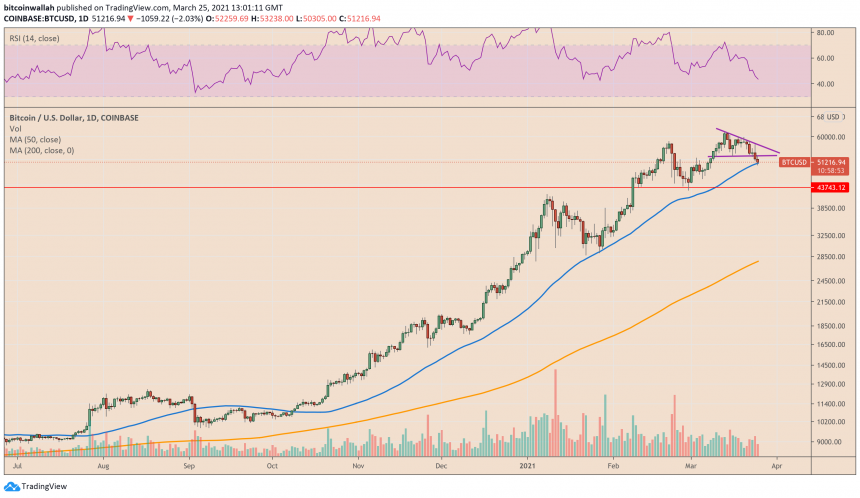Bitcoin Sell-Off Worsens as US Jobless Claims Hit Pandemic Low; What’s Next?

Bitcoin edged lower Thursday after the jobless claims in the United States reached their lowest level of the pandemic, confirming that the country’s economy is recovering at a faster rate.
The benchmark cryptocurrency fell to as low as $50,305 ahead of the New York opening bell, continuing its decline from the previous five sessions as traders became uncertain about potential demand against an optimistic economic outlook in the US.

Bitcoin earlier surged by more than 1,500 percent from its mid-March nadir as investors hunted for profitable investment alternatives against a dwindling US dollar and meager US Treasury yields.
Nevertheless, widespread vaccinations, easing business restrictions, and a flurry of government stimulus packages worked as an adhesive bandage on a very-wounded US economy. Americans are now spending more on businesses that were at the forefront of losses during the coronavirus pandemic. They include restaurants, gyms, hotels, salons, etc.
The renewed consumer spending led to the creation of 379,00 jobs in February. As a result, the unemployment rate ticked down to 6.2 percent, the US Labor Department’s statistics showed.
“There are fewer people that are losing their jobs,” Ben Ayers, senior economist at Nationwide Mutual Insurance Co, told the Wall Street Journal. “That’s a great sign that things are starting to pick up again for the economy.”
The 10-year US Treasury yield dropped down to 1.603 percent from 1.613 percent in the previous session in the bond market. Yields drop when bond prices rise. Against the falling US stock futures on Thursday, it appeared portfolio managers were moving their capital out of equities to bonds in a quarter-end rebalancing.
Bitcoin, which moved almost in tandem with Wall Street during the pandemic, dragged itself lower in sync with the Nasdaq Composite and S&P 500 indexes.
Recovery for Bitcoin Ahead?
There are signs that the rebound in the global economy might slow down by an extension of coronavirus lockdowns and growing limitations in the supply chain for vaccines. Fresh stimulus checks in the US also risk faster inflation, threatening to curb appetite for government bonds and technology stocks.
Last week, the Federal Reserve clarified that it would maintain lower interest rates and infinite bond-buying programs unless it achieves a sustainable inflation rate above 2 percent and maximum employment. With the US economy recovering, the central bank is steadily inching towards its target before introducing the next rate hike.
The Fed wants to maintain lower rates until 2024.
Therefore, Bitcoin is entering a period of uncertainty. On the one hand, the prospect of higher inflation and monetary debasement could make the cryptocurrency appealing for more corporates and mainstream investors.
Meanwhile, on the other, a focus shift towards the pandemic losers — sectors like energy, hospitality, etc. — offer traditional investors a less risky alternative to park their capital after selling overvalued assets.
Technically, Bitcoin now holds support at its 50-day moving average. A breakdown below it risks crashing the cryptocurrency towards $44,000.